
Are you tired of struggling? What if the key to achieving your desires lies not in relentless effort, but in surrendering to the flow of the universe? This video explores the profound concept of non-resistance, drawing on ancient wisdom and spiritual teachings, to reveal how you can unlock your true potential by aligning with divine will. Discover how resisting the challenges and obstacles in life creates more struggle, while embracing them allows you to effortlessly move toward your goals… Learn the powerful practice of surrender and how it can transform your relationships, career, and overall well-being…. Understand that you are one with God…, and by trusting in the divine plan, you can effortlessly attract what you desire….
This article will show you:
● The meaning of non-resistance and how it differs from inaction….
● How resisting what is creates more challenges and suffering….
● The importance of aligning with the natural flow of life and the universe….
● Practical techniques to practice non-resistance in your daily life….
● How to identify what you are resisting and how to let it go….
● How surrendering leads to greater power, peace, and fulfillment….
● How to manifest your desires by aligning with the divine will….
● Understanding that you are a divine being, not separate from God….
Stop struggling and start flowing! Embrace the power of non-resistance and create a life of ease, abundance, and purpose.
The article is based on a discussion of a Neville Goddard lecture exploring the concept of humanity’s divine nature, asserting that individuals are inherently God experiencing a temporary human existence to ultimately achieve spiritual enlightenment. It is also based on a Youtube Video below by Master Gerald Businge focusing on the principle of non-resistance as a path to spiritual mastery and manifesting desires. This principle involves accepting what cannot be changed, having courage to change what can, and the wisdom to discern the difference. Both sources emphasize spiritual growth and achieving harmony through different, yet complementary, approaches. The first uses biblical interpretations to explain the inherent divinity of humanity, and the second uses a more contemporary approach focusing on energy and flow.
1. What does it mean to say “God became man that man may become God,” according to Neville Goddard?
Neville Goddard interprets this statement to mean that each individual is, in essence, God who has chosen to become human. This “descent” into human form is a deliberate act, a “grand experiment” where God forgets their true nature to experience and raise humanity back to a divine level. It’s not that God as a separate entity became man; rather, you, as God, became man so that humanity might become as God. The ultimate goal of this process is to awaken to this truth and return to a state of unity with the divine, having “redeemed” the human experience with love.
2. What is the significance of the crucifixion and resurrection, according to the source?
The crucifixion, in this context, represents the moment when the divine consciousness (God) unites completely with the human experience. It’s not a historical event, but a continuous process happening within each individual. The resurrection symbolizes the awakening of this divine consciousness within man, raising the human experience to the level of Godhood. This is not a one-time event, but a journey that all individuals will eventually undertake as they realize their divine nature. This is about “raising man to the level of love,” as love is the core of the God-state.
3. What does non-resistance mean in the context of attracting what you want?
Non-resistance means aligning yourself with the natural flow of the universe by accepting what is. It’s about recognizing that everything flows from a divine source, like water or breath, and that striving against this flow creates blockages. Instead of fighting or struggling, one should become “irresistible” to what they desire by embodying a state of acceptance and receptivity. This is not passive inaction but rather the active alignment with the natural movement towards fulfillment. It’s about ceasing internal resistance so the desired state may freely manifest.
4. How does the concept of “flow” relate to manifestation?
The concept of “flow” emphasizes that everything is energy in motion and that we attract to ourselves what we are in alignment with. By ceasing resistance and “going with the flow” we create receptivity for opportunities to come into our lives effortlessly. This means not fighting challenges and obstacles, but rather understanding them as opportunities to learn and grow, and then moving around them, like a river flows around a stone. When we are in a state of flow, we allow opportunities and desires to naturally unfold without force or effort.
5. What does the phrase “what you resist will persist” mean, and how can it be avoided?
“What you resist will persist” highlights the idea that focusing on and fighting against undesirable circumstances actually reinforces them. By resisting negative thoughts, unwanted situations, or even physical discomfort, we give them our energy and attention which allows them to grow. Instead of resisting, the approach is to understand what lesson is to be learned and accept the situation as part of the journey. This does not mean passively enduring but actively recognizing the situation and flowing through or around it with faith and grace. Non-resistance allows us to move past challenges with ease, instead of being stuck in repetitive cycles.
6. What is the significance of the “present moment,” and how can we cultivate it?
The present moment is the only time that is real, and it is a “gift,” the source implies. Neither the past nor the future can be changed or directly impacted. Cultivating presence, then, is key to being in tune with the power of the universe and actively creating our experience. This is achieved by focusing on the now, utilizing practices like meditation to center our awareness, and consciously observing our thoughts and feelings without judgement. By embracing the present moment, we can release resistance to what is, harness our energy toward goals, and unlock true creation potential.
7. What is the difference between non-violent resistance and non-resistance as discussed in the sources?
Non-violent resistance, exemplified by figures like Gandhi and Martin Luther King Jr., is a strategic approach to challenging injustice using peaceful means. Non-resistance, however, goes deeper. It does not seek to change the external world, but instead it is an inner state of acceptance and alignment with the universal flow. While both can look similar externally (such as non-reaction to provocation), non-resistance involves a surrender to “what is”, and trusting that things will unfold according to their natural course. Non-resistance is not inaction but a deep knowing that by aligning ourselves with the divine flow, we can achieve the greatest power and positive change in our lives and in the world.
8. How do limiting beliefs and fears contribute to resistance, and how can they be overcome?
Limiting beliefs and fears create inner blockages that prevent us from experiencing our true potential and create resistance to the flow of life. These self-imposed boundaries, often based on past experiences or social conditioning, keep us stuck in negative cycles. They express themselves as “I must,” or “it can’t be done this way.” The key to overcoming them is awareness and challenging those beliefs through the use of positive self-talk and focusing our attention on what we want. By replacing limiting words with empowering ones (“I am,” “I deserve”) and actively tuning into our inner knowing, we dismantle self-created barriers and become receptive to our highest potential, allowing life to flow into the expression of our inherent desires.
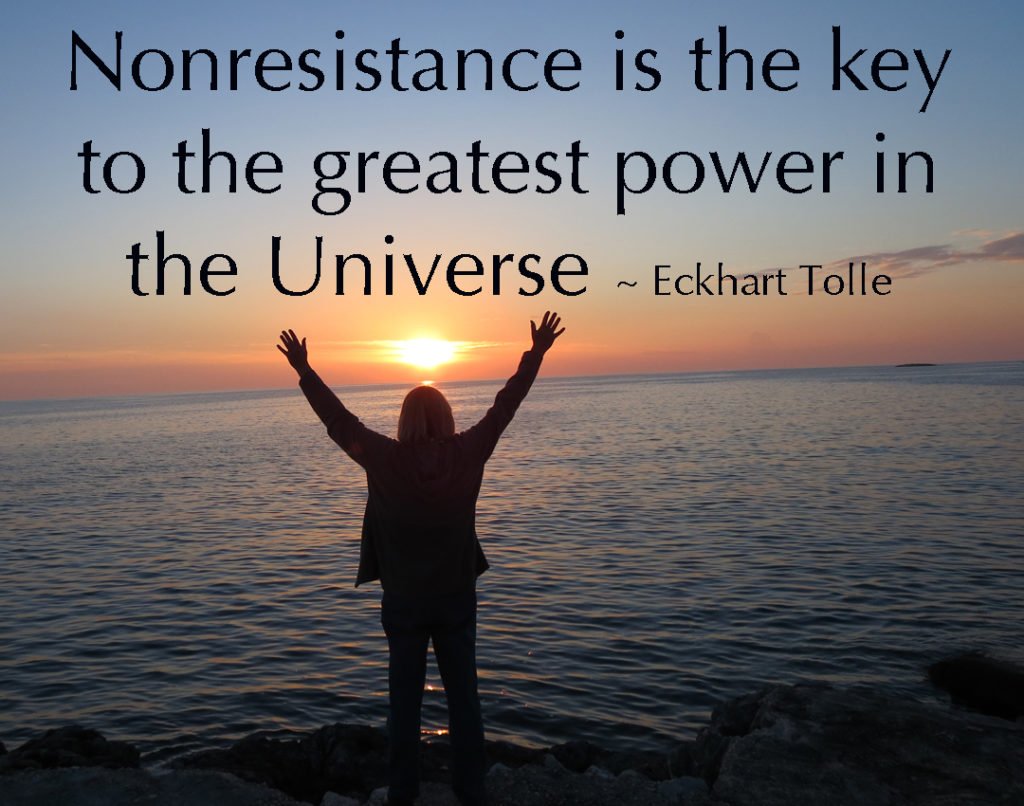
Quiz
Instructions: Answer each question in 2-3 sentences based on the provided source material.
- According to Neville Goddard, what is the true nature of humanity’s relationship with God?
- What does Goddard suggest is the purpose of humanity’s descent into the material world?
- How does Goddard interpret the phrase, “My God, my God, why hast thou forsaken me?” in Psalm 22?
- According to the second source, what does non-resistance mean, and how is it related to power?
- How does the second source describe the process of manifestation?
- What is meant by “flow” according to the second source, and how is it achieved?
- According to the second source, how can one identify what they are resisting in their life?
- What does the second source mean when it references “the present” and how is it important?
- What is the significance of the phrase “Be still and know that I am God”?
- According to the second source, how does “meekness” relate to non-resistance?
Answer Key
- According to Neville Goddard, humans are not beings created by God, but are God who became human to experience the human form. The goal of this descent is so that humanity may ascend to a state of complete awareness of its divine nature.
- Goddard suggests that humanity’s descent into the material world was a conscious choice made by God to experience creation and raise it to the level of love by fully embodying human nature.
- Goddard interprets the cry in Psalm 22 as a reflection of God’s feeling of separation from its true nature, which occurred to take on human form, and not to be taken literally as a cry of abandonment.
- Non-resistance, in the second source, refers to aligning with the natural flow of the universe. It is not about passivity but about letting go of resistance to what is, allowing power to flow through.
- The second source describes manifestation as beginning in a state of quietness where nothing is seen, relying on one’s thoughts and feelings to create new possibilities.
- In the second source, flow refers to the natural state of the universe where energy moves unimpeded, and one achieves it by accepting what is, allowing things to move without resistance, and not directing the flow by resisting things.
- According to the second source, one identifies resistance by noticing when things don’t flow and by asking what they are not accepting or what is not being allowed in their life.
- The present is described as a gift, the only time one can change anything. The present moment is where true power and manifestation reside.
- The phrase “Be still and know that I am God,” in the context of the text, refers to the need to quiet the mind and tune into the divine nature and the power within, without resisting what is.
- Meekness, in the second source, does not imply weakness but rather a state of not resisting or giving strength to any adversary, allowing things to flow, and thus drawing more strength to the person.
Essay Questions
Instructions: Answer each of the following essay questions with well-organized, thesis-driven essays drawing from the source material.
- Compare and contrast the concepts of “God becoming man” in Neville Goddard’s interpretation and the concept of non-resistance as described in “The Power of God in Non-Resistance.” How do these ideas align and/or diverge in their views of human potential and spiritual growth?
- Discuss the role of love in both texts. How does love function as a motivation for action and a path toward spiritual fulfillment according to Goddard, and how is it reflected in the concept of non-resistance and “flow” in the second source?
- Explore the concept of resistance as discussed in the second source. What are the different types of resistance highlighted, and how does it impede the natural state of flow and manifestation? Analyze how the source proposes overcoming these resistances.
- Examine the relationship between the individual and the universal energy or God as depicted in both sources. How does each source define this relationship, and how do they suggest individuals can align themselves with this force?
- In the context of “The Power of God in Non-Resistance,” analyze the idea that “whatever you resist persists”. Use real-world examples and draw from the text to evaluate what this means and how to overcome it by aligning with “the flow.”
Glossary of Key Terms
- Elohim: A Hebrew term used in the Bible, often translated as “God,” but which Neville Goddard interprets as a compound unity of one made of many, referring to the collective of Gods who became humanity.
- Yachid: A Hebrew word translated as “my only son” or “my darling” in the Bible and interpreted by Goddard as a symbol of the individual’s son, the embodiment of one’s divine nature, who will reveal the God within.
- Non-Resistance: The act of not opposing or fighting against the natural flow of life and events. In this context, it is a means to align with the universe and allow for easier manifestation.
- Flow: The state of being in harmony with the universal energy, where things move and manifest naturally, without struggle, and is achieved by letting go of resistance.
- Manifestation: The process by which thoughts and intentions become reality. In the second source, it is seen as a natural outcome of aligning with universal forces and one’s inner divinity.
- Present Moment: The current instant, which is seen as the only point of power and change, rather than the past or the future. The present is considered the greatest gift.
- Meekness: In the context of the second text, this is not about weakness but about an intentional lack of resistance to those who oppose, a choice not to engage in conflict, and to redirect energy towards the good, allowing the natural flow of things to occur.
- Gestation: The process and period of development from conception to birth, used in the second text as a metaphor for the natural and necessary time period between the desire for something and its manifestation in reality.
- The I AM: An expression from the Bible often associated with God, but here interpreted as one’s true divine self; the individual awareness of being the creator.
- Quiescence: A state of inactivity or stillness that the text suggests will be the result of total redemption, where all creation will be brought back to the state of wholeness and unity with the divine.
Don’t forget you can share and reproduce this content freely. Do subscribe to this channel here so you receive more spiritual and personal empowerment messages.
You can also access our coaching services and those of leading spiritual gurus through their AI avatars at https://www.ultimatemasters.org/coaching
You can ask anything and get personal guidance at https://www.ultimatemasters.org/ask
You can support us here https://www.paypal.com/donate/?hosted_button_id=W59YG95W73DG2




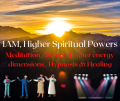

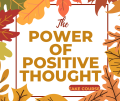

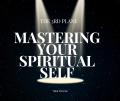

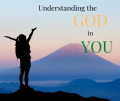
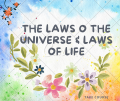










0 responses on "The Power of Non-Resistance: Unlock Your Potential by Surrendering to the Flow"